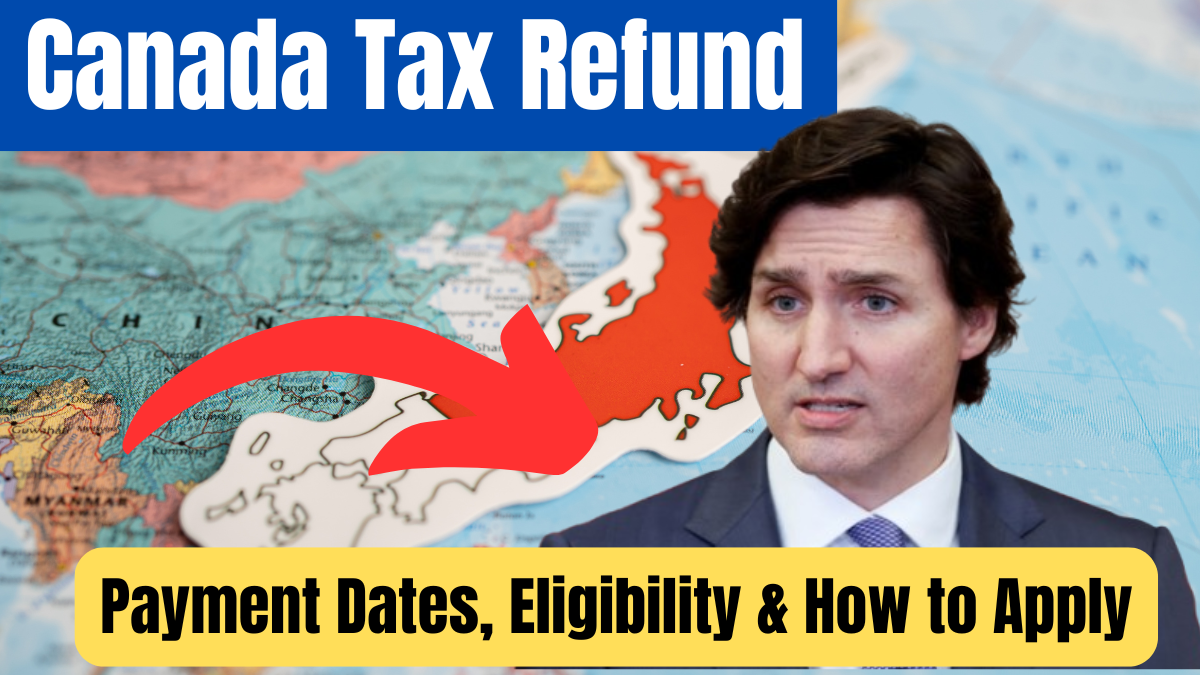The Canada Tax Refund 2025 is an essential part of the tax season for Canadians, offering taxpayers the opportunity to recover overpaid taxes through credits, deductions, and benefit payments. When you file your income tax return, the Canada Revenue Agency (CRA) calculates whether you’ve paid more taxes than necessary throughout the year. If so, you receive a tax refund.
Refunds typically result from:
- Excess tax deductions from your salary
- Eligible tax credits (e.g., Canada Child Benefit, GST/HST credit)
- RRSP contributions that reduce taxable income
Understanding how to file correctly and monitor your refund status ensures a smooth tax season with fewer delays.

Who Is Receiving Canada Tax Refund Payments in March 2025?
While tax refunds are issued after the CRA processes returns, several benefit payments are scheduled for March 2025. It’s important to differentiate between regular benefits and tax refunds:
1. Ontario Trillium Benefit (OTB)
The OTB assists Ontario residents with energy costs, property taxes, and sales tax credits.
- March Payment Date: March 10, 2025
- Future Payment Dates: April 10, 2025, May 9, 2025
2. Canada Child Benefit (CCB)
The CCB provides tax-free monthly payments to eligible families to help with raising children under 18.
- March Payment Date: March 20, 2025
3. GST/HST Credit
While no payment occurs in March, the next GST/HST credit is scheduled shortly after:
- Next Payment Date: April 4, 2025
| Benefit | March Payment Date | Amount Varies Based On |
|---|---|---|
| Ontario Trillium Benefit (OTB) | March 10, 2025 | Income, rent, and property tax expenses |
| Canada Child Benefit (CCB) | March 20, 2025 | Number of children and family income |
| GST/HST Credit | No March payment | Family size and adjusted net income |
How Can You Apply for the Canada Tax Refund 2025?
Receiving your tax refund starts with filing your 2024 tax return. Here’s a step-by-step guide to ensure you maximize your refund:
Step 1: Gather Necessary Documents
Collect all relevant paperwork, including:
- T4 slips: Proof of employment income
- Receipts: Medical expenses, charitable donations, and childcare costs
- RRSP Contribution Receipts: Contributions up to March 3, 2025, can be deducted for the 2024 tax year
MUST READ: Consider an insured annuity to increase cashflow in retirement
Step 2: Choose Your Filing Method
You can submit your return using one of the following methods:
| Filing Method | Details | Advantages |
|---|---|---|
| NETFILE | File online with CRA-certified software | Fastest refund processing |
| Paper Filing | Mail a completed paper return | Option for non-digital filers |
| EFILE | Tax professionals file for you | Convenience with expert help |
Electronic filing through NETFILE ensures the quickest processing and refund delivery.
Step 3: Mark Important Dates
Don’t miss these key deadlines:
| Deadline | Date |
|---|---|
| CRA opens for tax filing | February 24, 2025 |
| RRSP contribution deadline (2024 taxes) | March 3, 2025 |
| Tax filing deadline (most individuals) | April 30, 2025 |
| Self-employed tax filing deadline | June 16, 2025 |
| Late-filing penalty relief deadline | June 2, 2025 |
Filing early ensures faster refunds and avoids last-minute stress.
Step 4: Monitor Your Refund Status
After submitting your return, check your refund status via:
- Online: CRA’s My Account service
- CRA Mobile App: Download for quick access to payment details
- Phone: Call the CRA’s automated Tax Information Phone Service (TIPS)
The CRA recommends waiting eight weeks after filing before contacting them about your refund.
What Are the Late-Filing Penalty Relief Measures for 2025?
To accommodate taxpayers facing difficulties, the CRA has introduced late-filing penalty relief:
- Individuals: Relief until June 2, 2025
- Trusts: Relief until May 1, 2025
Failing to file by the deadlines without an extension could result in penalties and interest charges, so use this relief period wisely.
How Can You Maximize Your Canada Tax Refund in 2025?
Here are effective strategies to ensure you get the most out of your refund:
- Contribute to Your RRSP: Contributions made before March 3, 2025 can reduce your taxable income.
- Claim All Eligible Credits: Don’t overlook benefits like the Canada Workers Benefit (CWB) and Disability Tax Credit (DTC).
- Organize Receipts: Track medical, childcare, and donation expenses for deductions.
- Use Direct Deposit: Get your refund faster by enrolling in direct deposit with the CRA.
FAQs
When will I receive my Canada Tax Refund for 2025?
Most refunds are issued within two weeks of filing online or eight weeks if you file by paper.
What’s the deadline to file my 2024 tax return?
For most individuals, the deadline is April 30, 2025. Self-employed individuals have until June 16, 2025.
Can I still contribute to my RRSP for the 2024 tax year?
Yes, you have until March 3, 2025 to make contributions that apply to the 2024 tax return.
How do I check the status of my refund?
You can check online through CRA My Account, the CRA mobile app, or by calling TIPS.
What happens if I miss the tax filing deadline?
Late filers may face penalties unless they qualify for the CRA’s penalty relief program until June 2, 2025.
Is there a benefit to filing early?
Yes, early filers receive refunds sooner and avoid the stress of last-minute errors.
Do I need to file taxes if I have no income?
Filing ensures you receive credits like the GST/HST credit or CCB, even with no income.
What documents should I keep after filing?
Retain tax slips, receipts, and CRA correspondence for at least six years for potential audits.
Aanchal is a passionate writer with a keen interest in storytelling, content creation, and creative expression. She enjoys exploring diverse topics and crafting engaging narratives that captivate readers.
